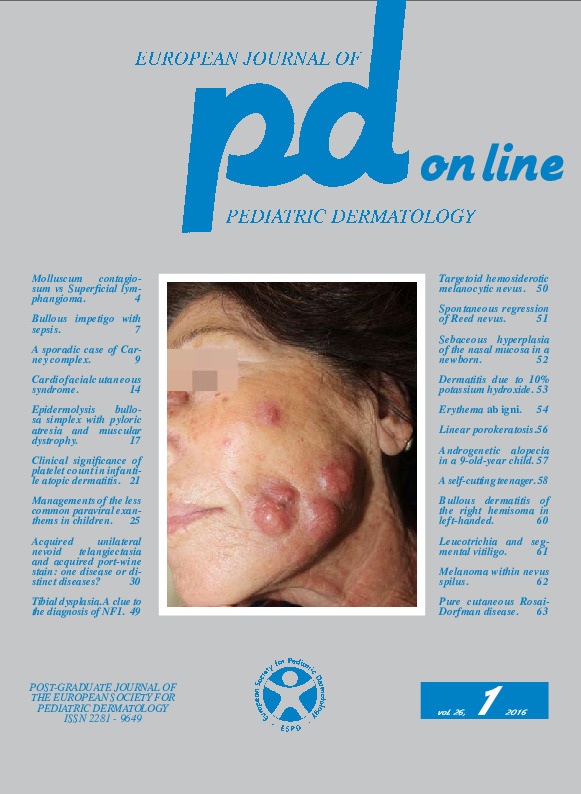Tibial dysplasia. A clue to the diagnosis of NF1.
Downloads
DOI:
https://doi.org/10.26326/2281-9649.26.1.1193How to Cite
Bonifazi E. 2016. Tibial dysplasia. A clue to the diagnosis of NF1. Eur. J. Pediat. Dermatol. 26 (1): 49. 10.26326/2281-9649.26.1.1193.
pp. 49
Abstract
The subjects with NF1 present some characteristic bone abnormalities. Among the latter there is tibial dysplasia, which is usually located between the middle third and the distal third of the tibia (2). In this site there is thinning of the bone, due to narrowing of the medullary, whereas the cortical can be normal or thickened. The weakening of the bone is responsible for an anterolateral bending of the tibia -tibia procurvata et vara- (2). The latter can be complicated by pathological fractures and mainly by defective formation of bone callus and non rejoining of the two fragments (pseudoarthrosis). The bone fragility is partly due to an increased osteocyte-related micro-porosity with persistence of ectopic blood vessels, hypomineralization, and generalized defect of organic matrix formation (1).Keywords
Tibial dysplasia, neurofibromatosis

